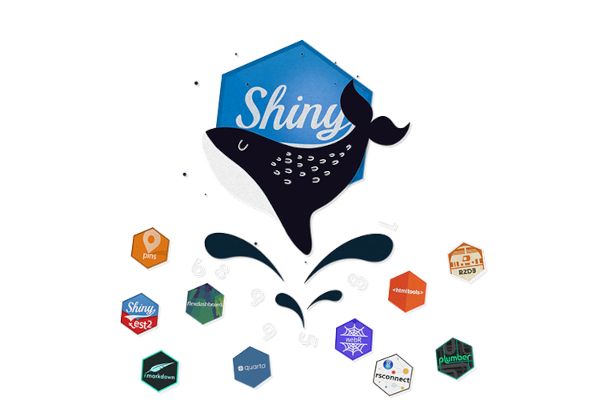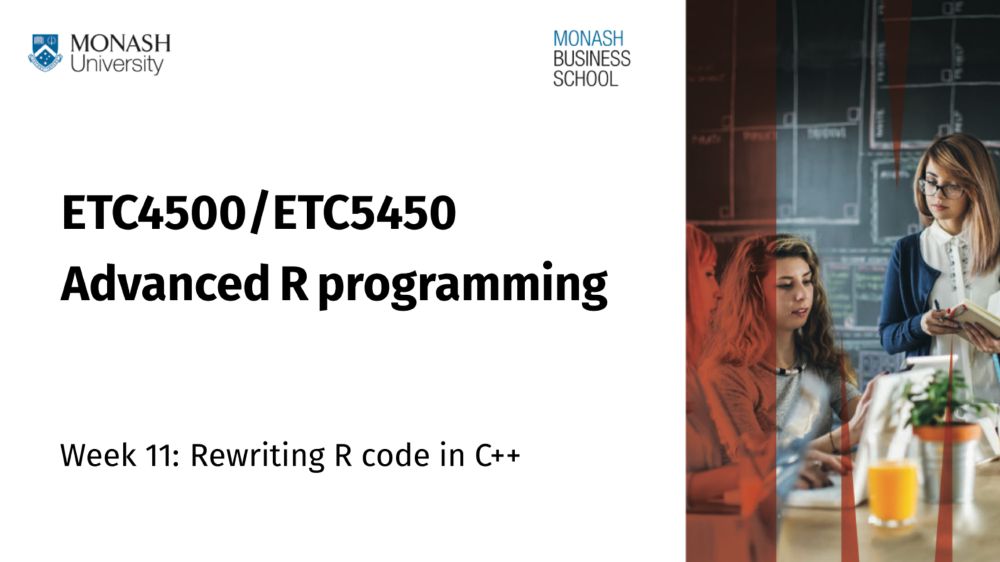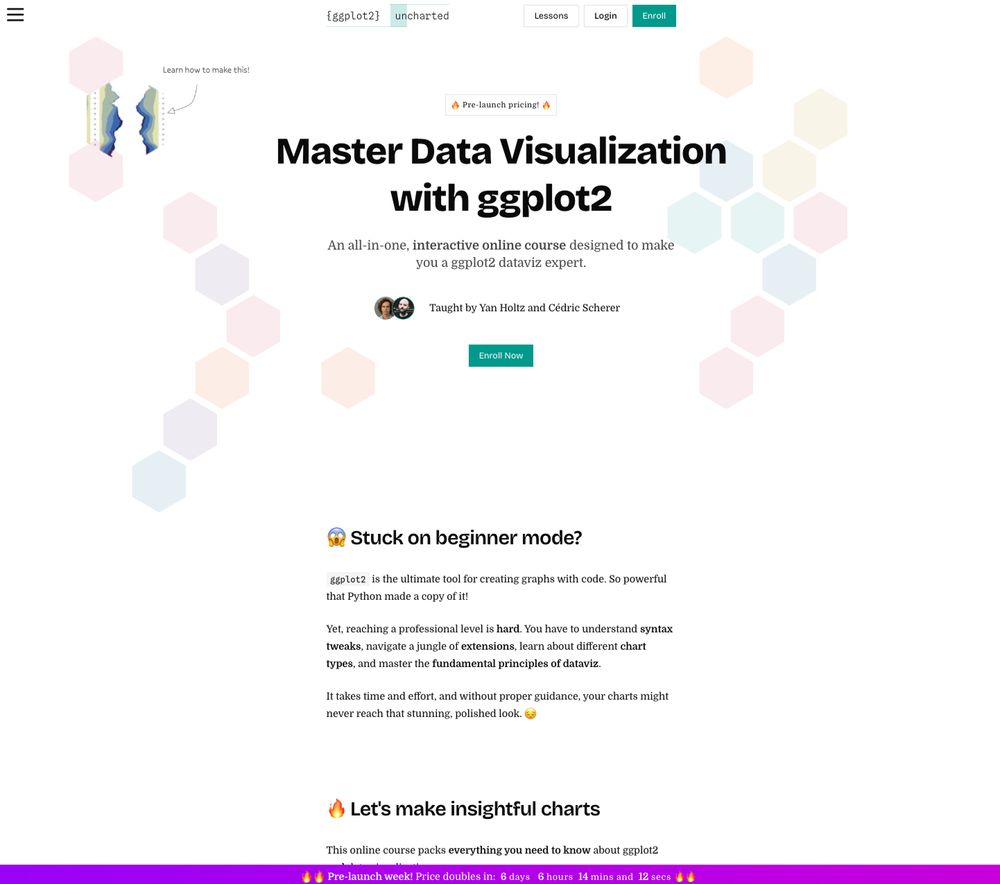Personally, a lot of the times I don’t even think
10.10.2025 19:40 — 👍 10 🔁 1 💬 0 📌 0
And then someone tells you about randomised non-comparative trial
04.10.2025 14:08 — 👍 0 🔁 0 💬 0 📌 0

The authors probably don’t understand the derivation either & asked a bot too 😉
03.10.2025 17:07 — 👍 38 🔁 10 💬 1 📌 1
Indeed, there are always better ways to say something. The thing is that a course on causal inference can go into many different directions. Part of the causal inference literature is hard to follow imo, but there are definitely many concepts that can be learned and useful without those 5 years
19.09.2025 18:41 — 👍 2 🔁 0 💬 0 📌 0


rixpress is now an @ropensci.org package!
Link: docs.ropensci.org/rixpress/
17.09.2025 08:31 — 👍 38 🔁 9 💬 0 📌 1

Whoa—my book is up for pre-order!
𝐌𝐨𝐝𝐞𝐥 𝐭𝐨 𝐌𝐞𝐚𝐧𝐢𝐧𝐠: 𝐇𝐨𝐰 𝐭𝐨 𝐈𝐧𝐭𝐞𝐫𝐩𝐫𝐞𝐭 𝐒𝐭𝐚𝐭 & 𝐌𝐋 𝐌𝐨𝐝𝐞𝐥𝐬 𝐢𝐧 #Rstats 𝐚𝐧𝐝 #PyData
The book presents an ultra-simple and powerful workflow to make sense of ± any model you fit
The web version will stay free forever and my proceeds go to charity.
tinyurl.com/4fk56fc8
17.09.2025 19:49 — 👍 274 🔁 84 💬 10 📌 4
And hopefully no rethinking my rethinking 😅
11.09.2025 10:51 — 👍 1 🔁 0 💬 1 📌 0

Rethinking measurement invariance causally
Highlights:
It is preferable to work with a causal definition of measurement invariance
A violation of measurement invariance is a potentially substantively interesting observation
Standard tests for measurement invariance rely on strong assumptions
Group differences can be thought of as descriptive results

Conceptual graph illustration the central points of the manuscript. A group variable is potentiall connected to a construct of interest which affects items. Measurement invariance is violated if the group variable directly affects the items, for example by modifying the loadings from the construct to the items, or by directly affecting an item

To make this less abstract, consider a scenario where students take an exam, R, meant to capture some ability, T, and then are admitted to a program, V, depending on their exam results: R → V. This is sufficient to result in a violation of the statistical definition of measurement invariance. Exam results and admission are not independent given ability because exam results have a direct effect on admission. Even if we know somebody’s ability (e.g., we know it’s very high), learning about their admission status (e.g., they were not admitted) can tell us something about their exam result (e.g., it may have been worse than expected). According to the causal definition, this in itself does not constitute measurement bias, which seems a sensible conclusion here. After all, the scenario does not involve any reason to believe that the measurement process varied systematically by admission status. Admission happens after the exams took place, it cannot retroactively influence the measurement process (and, for example, lead to unfair treatment depending on admission status).
New paper out with @boryslaw.bsky.social 🥳 In which we sketch out how to rethink measurement invariance causally for applied researchers. And provide a causal definition of measurement invariance!
www.sciencedirect.com/science/arti...
11.09.2025 09:11 — 👍 114 🔁 36 💬 3 📌 1
Wwuuuuuuut
11.09.2025 10:10 — 👍 1 🔁 0 💬 1 📌 0
The authors "conclude that psychometric standards must be sufficiently rigorous to distinguish genuine constructs and associations from methodological artifacts that can otherwise pose a serious validity threat." Which sounds great, but is typically *impossible* to achieve in psychology
1/5
11.09.2025 08:15 — 👍 2 🔁 1 💬 1 📌 0
Luc is also currently working on this package that will give you (not only) tikz-based diagrams. Still very early on, but something to look forward to!
25.08.2025 19:34 — 👍 0 🔁 0 💬 0 📌 0
#statstab #405 Best Practices for Estimating, Interpreting, and
Presenting Nonlinear Interaction Effects
Thoughts: Guidance on nonlinear interactions, reporting (probabilities) and visualisations.
#probit #logit #logisticregression #nonlinear #guide
sociologicalscience.com/download/vol...
22.08.2025 19:20 — 👍 44 🔁 10 💬 4 📌 2
The thing with dating apps is that it is literally like getting a job: it doesn’t work until it works
15.08.2025 19:37 — 👍 4 🔁 0 💬 1 📌 0

Fair coins tend to land on the same side they started: evidence from 350,757 flips.
That's the title of our paper summarizing ~650 hours of coin-tossing experimentation just published in the Journal of the American Statistical Association.
doi.org/10.1080/0162...
11.08.2025 14:20 — 👍 16 🔁 8 💬 1 📌 1

Shiny in Production 2025: Full Length Talks
We are pleased to announce the full length talks for this year's Shiny in Production conference! In this blog post, we've pulled together all of the talk abstracts to give you a full view of what to expect!
We're happy to share the main talks for the Shiny in Production Conference 2025!
This year's lineup includes some great talks on using Shiny in real-world projects, from building apps to scaling them in production.
Looking forward to seeing everyone there!
#ShinyInProduction #RStats #DataScience
18.06.2025 11:32 — 👍 9 🔁 4 💬 0 📌 0

It was so so good to work with Monash Uni students on their first steps in C++ programming for R applications! 🚀✨ They made it! And now, they're ready to code! 🤖👾
arp.numbat.space/week11/
#rstats #rcpp #armadillo
23.05.2025 02:56 — 👍 21 🔁 4 💬 1 📌 1
I used to do that during my bachelors and (less but still) masters. That habit got me in touch with my previous internship supervisor. It also allowed me to exchange a few emails with cool people, like Yalom, and it is also how I got in touch with my phd supervisor
24.05.2025 15:10 — 👍 1 🔁 0 💬 0 📌 0
 17.05.2025 18:01 — 👍 102 🔁 20 💬 6 📌 2
17.05.2025 18:01 — 👍 102 🔁 20 💬 6 📌 2

Doctoral fellow
PhD fellowship to work with me and Benedetta Franceschiello on the analysis and modelling of fast sampled fMRI data!
www.ugent.be/en/work/scie...
15.05.2025 11:54 — 👍 11 🔁 10 💬 0 📌 0

The landing page of the course "ggplot2 uncharted" with the title teasing it with "Master Data Visualizations with ggplot2".
Excited to launch "ggplot2 [un]charted" with @yan-holtz.bsky.social! 🎉
An online course to master #ggplot2 with exercises, quizzes, and modules—and hands-on code running in your browser!
Still WIP—sign up now for a limited discount:
👉 www.ggplot2-uncharted.com
#rstats #DataViz #DataVisualization
12.05.2025 15:58 — 👍 165 🔁 51 💬 5 📌 11

Fonts in R
Taking control of fonts and text rendering in R can be challenging. This deep-dive teaches you everything (and then some) you need to know to keep your sanity
Mastering typefaces and fonts in #rstats has always been harder than it should.
I have tried to collect much of my relevant knowledge in this deep-dive blog post so you can spend your time picking the right typeface instead of cursing at the computer
12.05.2025 19:03 — 👍 256 🔁 82 💬 12 📌 7
Very beautiful moment tbh
10.05.2025 12:05 — 👍 1 🔁 0 💬 0 📌 0
Omg, I recently had a chat with LLM about this and out of nowhere it finished with a quote (and more) from Alfred Korzybski: "The map is not the territory — the scale you choose shapes what you see"
10.05.2025 12:03 — 👍 2 🔁 0 💬 1 📌 0
Also note that "removable" here is a mathematical term: an interaction is removable if we can nullify it with a monotonic transformation. But just because an interaction is "removable" doesn't mean it isn't substantial!
10.05.2025 11:48 — 👍 4 🔁 1 💬 2 📌 0
Oh, completely missed that reply. Thanks!
09.05.2025 15:27 — 👍 2 🔁 0 💬 0 📌 0
Assistant prof. Stony Brook University Political Science.
Political psychology: race, ethnicity, and politics; ideology. Loves measurement.
Sometimes ⚽ posts. YNWA. 🌭🐕🍺🚲
https://www.amengelhardt.com/
Brain & Cognition, KU Leuven
A nonprofit dedicated to advancing scientific psychology across disciplinary and geographic borders.
psychologicalscience.org
Jobs: jobs.psychologicalscience.org
Membership: psychologicalscience.org/members
#APSGlobal: APS Global Summit
Social Science Data Analysis (especially Dyadic, Mediation, SEM; davidakenny.net) and My Twisted Take on Political & Cultural Topics; Reposts Are Not Necessarily Endorsements
Deep interest in consumer psychology, advertising, marketing, retailing, services, tourism, and quantitative methods. Plays a lot of rock guitar🎸too.
https://umexpert.um.edu.my/mozardt
@mozardmohtar in X
Eye-tracking, Pupillometry, Word nerd, Learning and Memory, Language, R, Stats, Quant, Director Human Neuroscience Lab @bostoncollege www.drjasongeller.com
phd student and research & teaching assistant at IKMZ | University of Zurich🇨🇭| media psych & comm | human-AI relationships & wellbeing | open science
nadjarupprechter.wordpress.com
if (!working) {
playing_counterstrike()
at_gym()
creating_memes()
}
Director, Statistics for Development Division, at the Pacific Community. Posts are personal views, and most likely to be about data and #rstats, maybe with bits of history, social science and philosophy thrown in. Blog is at https://freerangestats.info/.
not very committed to sparkle motion
Professor of Technology and Economic Policy | Co-founder of causalscience.org | Associate Editor at Journal of Causal Inference | Executive Team at Academy of Management TIM Division
A magazine of U.S. foreign policy and international affairs, founded in 1922. https://www.foreignaffairs.com/
Sign up for our newsletters here: http://foreignaffairs.com/newsletter
Unparalleled reporting and commentary on politics and culture, plus humor and cartoons, fiction and poetry. Get our Daily newsletter: http://nyer.cm/gtI6pVM
Follow The New Yorker’s writers and contributors: https://go.bsky.app/Gh5bFwS
In-depth, independent reporting to better understand the world, now on Bluesky. News tips? Share them here: http://nyti.ms/2FVHq9v
News and analysis with a global perspective. We’re here to help you understand the world around you. Subscribe here: https://econ.st/4fAeu4q
https://shanelittrell.com/
Cognitive psychologist. Cornell University postdoc & researcher at Media Ecosystem Observatory. Previously UToronto (Munk School), UMiami, & UWaterloo | Bullshitology, conspiracy beliefs, political propaganda, metacognition 🧠☘️
statistics, science, software
https://www.zeileis.org/
Cultural evolution, delusions, metascience, misinformation, reasoning, and religion. Macquarie University, Sydney. (Google Scholar: https://tinyurl.com/5f2udu5p)
❤️📊 | 🗣️DE|EN|FR | #rstats | #econsky
Economist, Enthusiast of Chess, Math, Music and similar items. Data Dude.
Some call me the space cowboy, some call me the gangster of love. Sober 10 years.
Known to rearrange thoughts in other people's brains.











 17.05.2025 18:01 — 👍 102 🔁 20 💬 6 📌 2
17.05.2025 18:01 — 👍 102 🔁 20 💬 6 📌 2




